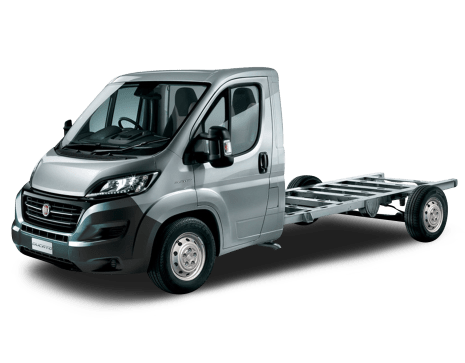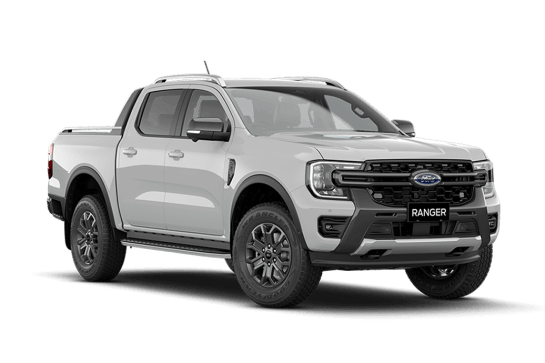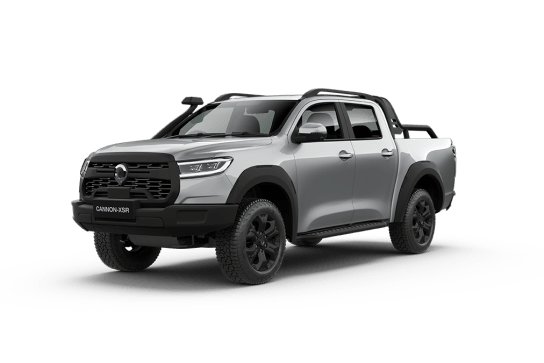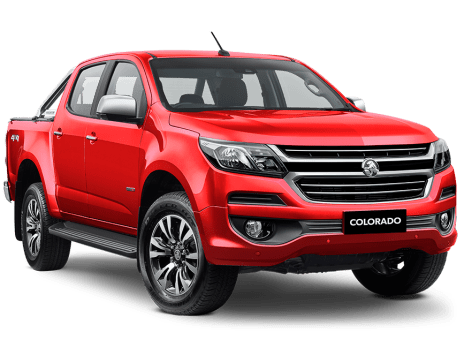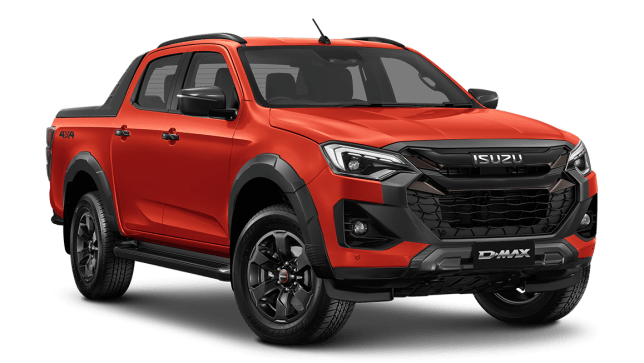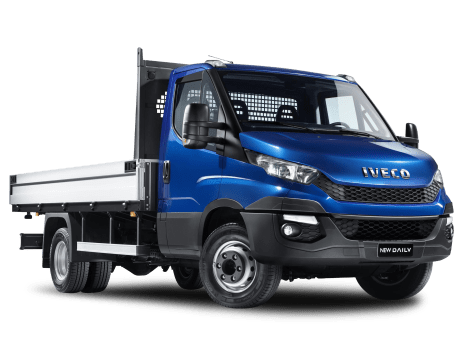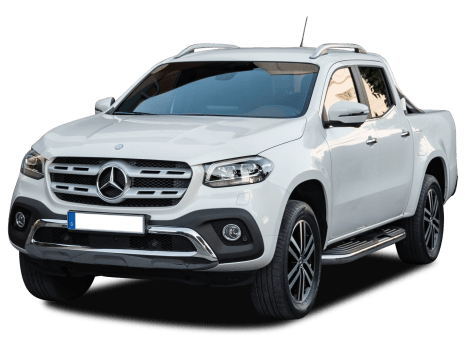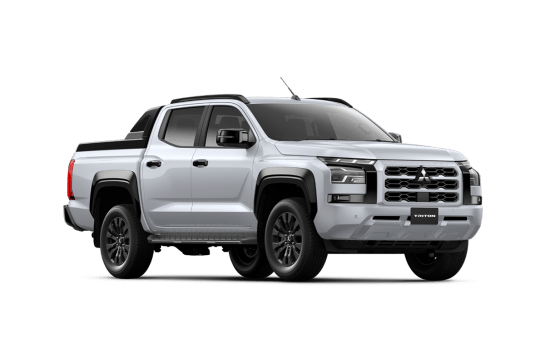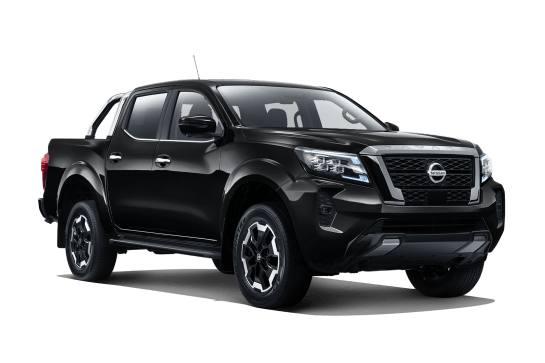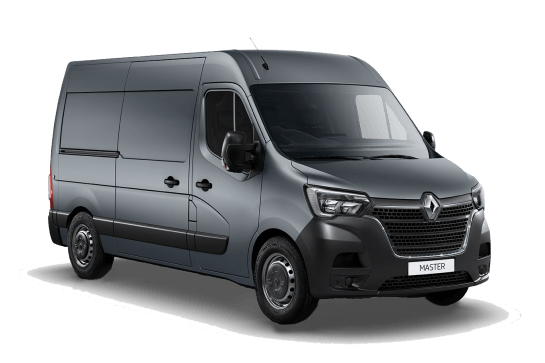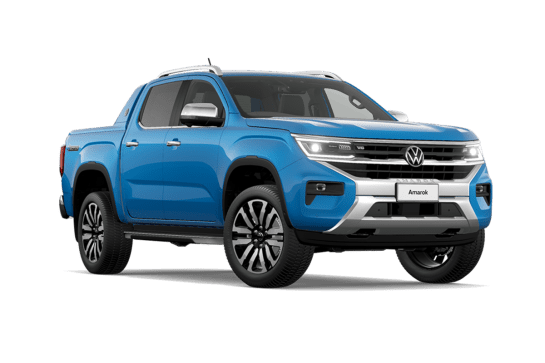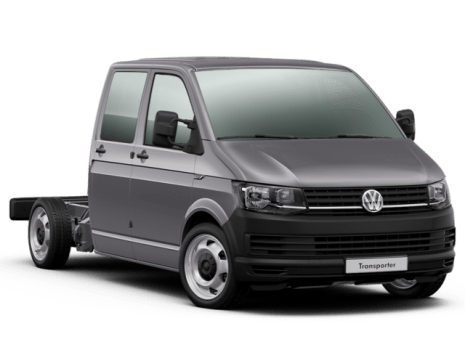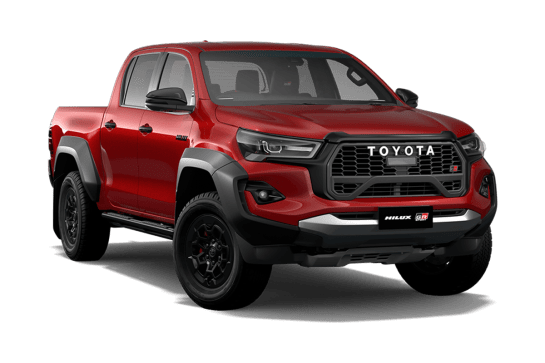
Toyota HiLux VS Mercedes-Benz Sprinter
Toyota HiLux
Likes
- Build quality
- 3500kg towing
- Load-carrying ability
Dislikes
- V-Active 48V performance
- Short service intervals
- Cramped rear seating
Mercedes-Benz Sprinter
Likes
- Safety
- Driver comfort
- All-round competence
Dislikes
- Pricing (compared to Chinese rivals)
- No driver’s left footrest/armrest
- Servicing costs
Summary
Toyota HiLux
Since its launch in the 1960s, the iconic HiLux has been one of Toyota’s strongest-selling models. The current eighth-generation continues that tradition, even though now in its ninth year in local showrooms and having lost its long-held 4x4 sales leadership to Ford’s Ranger.
Toyota has done a commendable job in keeping the HiLux looking fresh since its local launch in 2015, with numerous cosmetic/equipment updates and the addition of prestige models like the wide-track Rogue and performance-enhanced GR Sport.
The 4x4 HiLux’s latest upgrade is the first use of Toyota's new 'V-Active' 48V technology, which provides electric assistance to the diesel engine. Toyota claims improved fuel efficiency, acceleration and smoothness, along with enhanced off-road prowess. We recently put one to the test to see how it measures up from a tradie’s perspective.
Read more about
- Toyota Australia's rolling in it! Stronger supply of key models including Toyota HiLux, LandCruiser 300, RAV4 and Corolla generates record profit for market leader
- "I'm not sure I'd want to be a single EV-only manufacturer right now": Toyota Australia said people want hybrids putting heat on electric cars such as the Tesla Model Y, BYD Seal and MG4
- "Is Toyota ok?": Japanese giant faces hard questions and mounting controversies after suspending deliveries of the Toyota HiLux and LandCruiser 300 Series
| Safety rating | |
|---|---|
| Engine Type | 2.8L turbo |
| Fuel Type | — |
| Fuel Efficiency | 7.2L/100km |
| Seating | 5 seats |
Mercedes-Benz Sprinter
The Mercedes-Benz Sprinter has long been a formidable competitor in the Light Duty (3501-8000kg GVM) division of Australia’s highly competitive Heavy Commercial vehicle market.
The popular range offers a choice of panel van, cab-chassis and minibus body styles, four turbo-diesel engine variants (plus an all-electric drivetrain), three wheelbase lengths and for panel vans plus the choice of two roof heights.
An extensive overhaul of the Sprinter range in 2024 brought extra safety technologies, new comfort and convenience features and other benefits, which Mercedes-Benz claims can help drivers work more efficiently. We recently put one of the latest models to the test.
Read more about
- Tough work van levels up: 2025 Mercedes-Benz Vito, eVito vans and V-Class people mover get big refresh with electric variants to tackle E-Transit Custom and LDV eDeliver
- Top 10 most expensive Mercedes-Benz cars
- Fully electric big battery eSprinter joins new Mercedes-Benz Sprinter range updated with advanced safety and media tech: Price and specs
| Safety rating | — |
|---|---|
| Engine Type | 2.0L turbo |
| Fuel Type | Diesel |
| Fuel Efficiency | —L/100km |
| Seating | 2 seats |
Verdict
Toyota HiLux7.6/10
The HiLux’s age-defying sales and resale values confirm it’s still one of the top two 4x4 dual cabs on the market. However, its new V-Active technology feels underdone, as it adds weight (we reckon about 40kg) and complexity without gains in performance you can feel or economy you can meaningfully measure. Hopefully, Toyota’s next crack at a 'hybrid' HiLux will be more convincing.
Mercedes-Benz Sprinter8.5/10
Given the original Sprinter was released in 1995, it’s not surprising the current third-generation model feels like it’s benefitted greatly from decades of continuous refinement. Although the list price difference between our test vehicle and its closest Chinese rival is substantial, the 417 MWB Panel Van is hard to fault in terms of driver comfort, safety and all-round competence. It really is very good.
Design
Toyota HiLux
The HiLux’s enduring appeal is the ‘unbreakable’ feel when you step aboard. Even though its curvaceous styling is increasingly dated, we can’t fault the build quality as it displays a peerless standard of fit and finish which never wavers.
Our only major gripe (since its launch in 2015) is the cramped rear seating. It’s particularly tight for tall people, giving that I’m 186cm and when sitting in the rear seat with the driver’s seat in my position, my knees are pressed into its backrest and my head rubs on the roof lining.
Shoulder room for three large adults is equally challenging and tolerable only for short trips. We reckon the Ranger’s more accommodating rear stalls are significant in its sales leadership.
Mercedes-Benz Sprinter
The 417 MWB Panel Van rides on a 3665mm wheelbase (the shortest of three Sprinter wheelbases) and is almost 6.0 metres long (5932mm), more than 2.0 metres wide (2020mm) and stands almost 2.4 metres tall (2378mm). Its 12.4 metres kerb-to-kerb turning circle is impressively tight for a vehicle of this length.
It rides on simple and rugged MacPherson strut front suspension, with a robust live axle/leaf-spring arrangement under the tail. Steering is via rack and pinion and it has disc brakes all around.
Look beyond the optional silver metallic paint on our example and there’s extensive use of unpainted dark grey plastic on all the external surfaces where hard-working vans are most prone to wear and tear, including the hubcaps, front/rear bumpers, grille, door-handles/mirror shells and along the sides.
Its work-focused exterior styling is nicely integrated, combined with an equally neat and functional interior design that offers a visually-pleasing combination of patterned fabric seat-facings and hard surfaces that blend different shades of grey with splashes of satin chrome and piano black.
We also like the feel and response of mechanical switches (rather than touchscreen prompts) for adjusting settings like cabin temperature, fan speed and media volume.
Practicality
Toyota HiLux
With its 2150kg kerb weight and 3050kg GVM, the SR5 V-Active has a 900kg payload rating. It can also tow up to 3500kg of braked trailer but with its 5850kg GCM (or how much it can legally carry and tow at the same time) that would require a substantial 700kg reduction in payload to only 200kg, which could be used up by a driver and passenger alone.
Alternatively, you could lower the trailer weight limit by the same 700kg to 2800kg (which is still a sizeable trailer) and retain the SR5’s maximum payload. We reckon most owners would do this anyway, given few (if any) would need to tow 3500kg.
The load tub is 1570mm long, 1645mm wide and 495mm deep with 1105mm between the wheel housings. Therefore, it can’t carry a standard Aussie pallet but will take a Euro-sized one. There are four load-anchorage points and we welcome the new lower/raise assistance for the hefty tailgate.
Cabin storage includes a large-bottle holder and bin in each front door, plus pop-out cupholders on either side of the dash, upper and lower glove boxes (with the upper having access to air-con) and an overhead glasses holder.
The latest centre console layout has a wireless phone-charging pad and vertical phone-storage slot, small-bottle/cupholder, a bin for small items and a box with padded lid that doubles as an elbow rest.
Rear passengers get a bottle-holder and bin in each door, pockets on each front seat backrest and a fold-down centre armrest with two more cupholders.
Only the narrower driver’s side of the 60/40-split rear seat base-cushion can swing up and be stored vertically as the passenger-side is now fixed, given the V-Active’s 48V battery resides beneath it and is ventilated by a louvered air intake in the passenger footwell.
Mercedes-Benz Sprinter
With its 2215kg kerb weight and 4100kg GVM, our test vehicle has a sizeable 1885kg payload rating.
It’s also rated to tow up to 2000kg of braked trailer and with its 6100kg GCM (or how it can legally carry and tow at the same time), that means it can tow its maximum trailer weight while hauling its maximum payload to ensure optimum versatility.
The cargo bay, which offers a cave-like 9.0 cubic metres of load volume and internal lighting front and rear, has internal dimensions of 3316mm length (with bulkhead), 1732mm width and 1719mm height.
So, with 1350mm between the rear wheel-housings, it can comfortably fit two standard 1165mm-square Aussie pallets or up to four 1200 x 800mm Euro pallets, held in place by a choice of 10 floor-mounted load-anchorage points.
The cargo bay is accessed through a single kerbside sliding door with a wide 1260mm opening, or symmetrical rear barn-doors with large handles on each pillar to assist operator access.
The barn-doors also have internal storage bins and open to a full 180-degrees to assist forklift and loading dock access. Thoughtfully, their hinge design also holds the doors firmly open at 180 degrees, to minimise the chance of wind gusts slamming them shut with potential injury to the operator.
There’s also plenty of cabin storage starting with two tiers of bins in each door, with the highest being spacious enough to hold large bottles.
There's also a deep shelf on the passenger side lower dash, a large lidded compartment in the central dash-pad and overhead shelves with lockable storage on the passenger side. Plus, the dash offers a total of eight cup/small-bottle holders.
The base cushion of the two-passenger bench seat is also hinged at the front, which allows it to tilt forward and provide access to a large hidden storage area beneath.
A crew of three can travel in relative comfort (for a commercial van that is) thanks to a central seating position that provides a sturdy hoop-handle for support, sufficient knee clearance from the dash even for tall people, and a reasonably flat and spacious floor area.
The cabin also features the latest next-gen 'MBUX' multimedia system with 10.25-inch touchscreen, which for the first time offers wireless connectivity for Apple CarPlay and Android Auto.
There’s also digital radio and enhanced functionality including an optional navigation upgrade with seven years of map updates.
Price and features
Toyota HiLux
The new electrically-assisted drivetrain is available only in SR/SR5 4x4 dual cabs and the Rogue, paired with the HiLux’s ubiquitous 2.8-litre four-cylinder turbo-diesel and six-speed automatic.
Our SR5 V-Active 48V test vehicle has a list price of $63,260. It’s also equipped with the optional premium interior package, which for an additional $2500 adds black leather-accented seats and door trims, heated front seats and an eight-way power-adjustable driver’s seat. Its eye-catching 'Nebula Blue' premium paint option adds another $675.
Latest MY24 updates feature a redesigned front fascia with black ‘honeycomb’ grille, plus wireless phone charging, two USB-C ports in the centre console for rear seat passengers to use and a tailgate equipped with gas-struts to ease opening/closing effort.
Otherwise, it’s the same SR5 with which we’ve grown very familiar. Standard equipment includes 18-inch alloys and 265/60R18 tyres with a full-size alloy spare, along with LED lighting, side-steps, sports bar, privacy glass and more, even though Toyota still won’t throw in a tub-liner.
Inside is remote keyless entry/start, dual-zone climate, an air-conditioned cooler box, multiple USB ports/12-volt sockets and a 220-volt outlet, premium-grade steering wheel and shifter-knob, driver’s 4.2-inch colour multi-info display, a 360-degree camera view and more.
The 8.0-inch touchscreen for the multimedia system, including six-speaker audio, appears to shrink as each year passes, but is easy to use and offers multiple connectivity including Apple CarPlay/Android Auto and digital radio. It also projects imagery for the various camera views.
Mercedes-Benz Sprinter
Our test vehicle is the 417CDI MWB (Medium Wheelbase) Panel Van with standard roof height, which comes equipped with a 2.0-litre, four-cylinder, turbo-diesel engine and nine-speed automatic transmission for a list price of $86,018.
Our example is fitted with a couple of factory options, including the 'Cargo Pack' ($2265) which comprises a two-passenger bench seat, solid cabin bulkhead with fixed window and side-entrance assist handle, wooden cargo bay load floor and floor-to-roof wall-trim using 5.0mm-thick wood panelling.
It also has optional 'High-Tech Silver' metallic paint ($2534) which combined with the Cargo Pack raises the total price to $90,817.
In addition to the latest model’s upgraded safety (see Safety) and comfort/convenience (see Design) features, our test vehicle comes standard with 16-inch steel wheels and 235/65 R16C tyres plus a full-size spare, keyless start, steering wheel paddles for manual shifting, multi-function leather steering wheel, three USB-C ports and two 12-volt sockets, side marker lights and heated exterior mirrors.
There’s also daytime running lights, a parking package with reversing camera and front/rear parking sensors, traffic sign assist, tyre pressure monitoring and lots more.
Under the bonnet
Toyota HiLux
The venerable (1GD-FTV) 2.8 litre four-cylinder turbo-diesel with V-Active produces the same 150kW and 500Nm as the standard engine, driving through a six-speed torque converter automatic.
However, Toyota claims fuel economy gains of up to 9.5 per cent when this drivetrain is combined with the new hybrid technology, which comprises a 48-volt electric motor-generator, 48-volt lithium-ion battery and idle-stop system.
The turbo-diesel engine uses a silent-belt to drive the motor-generator, which charges the battery under the rear seat. This battery, which Toyota claims weighs less than eight kilograms with 4.3Ah capacity, also supplies electricity to the vehicle’s 12-volt system through a DC/DC converter.
This system can send up to 8.4kW of power and 65Nm of torque through the motor-generator to assist the engine. Toyota claims this delivers smoother and quieter yet more responsive performance and reduces engine load under acceleration. It also results in a small reduction in idle speed from 720rpm to 600rpm.
Deceleration and braking energy are also recovered, converted into electricity and stored in the 48V battery for later use. Toyota claims “hydraulic braking combined with regenerative braking creates a more effective and natural deceleration feel and supports downhill manoeuvring.”
The idle-stop system does not use the starter motor like conventional set-ups. Instead, the electric motor-generator, which is permanently connected to the engine via its belt-drive, delivers this function with greater smoothness and quietness.
Idle-stop duration can also be extended by the driver and, when restarting the engine on inclines, the idle-stop system retains brake pressure until enough drive force is generated to ensure smooth acceleration.
In another first for HiLux, its part-time, dual-range 4x4 system (with switchable rear diff-lock) in V-Active variants is paired with 'Multi-Terrain Select' to enhance off-road ability.
The driver can switch between six traction control settings tailored to suit a variety of terrain including 'Auto', 'Sand' and 'Mud' (high- and low-range), 'Deep Snow' and 'Dirt' (high-range) and Rock (low-range).
Mercedes-Benz Sprinter
The (OM654) 2.0-litre, four-cylinder, turbo-diesel, which meets Euro 6 emissions standards using AdBlue, produces 125kW of power at 3800rpm with peak torque of 400Nm served between 1700-2400rpm. The nine-speed torque converter automatic offers the choice of sequential manual-shifting using the steering wheel-mounted paddles.
Efficiency
Toyota HiLux
We completed a total distance of 580km, which comprised a mix of city and suburban driving with an empty load tub and up to four adults on board, plus some freeway/highway running with a near-maximum payload.
When we stopped to refuel at the end of our test, the dash display was claiming average combined consumption of 9.5L/100km, which was lineball with our own 9.4 figure calculated from fuel bowser and tripmeter readings.
Both are higher than Toyota’s official 7.2L/100km figure but within the usual 2.0-3.0L/100km discrepancy between OEM ratings and real-world figures.
Interestingly, the last time we tested a 4x4 SR5 auto dual cab ute (without V-Active) in 2023, using similar routes and payloads, we achieved 9.6L/100km. So, the V-Active’s drop in consumption was only about 2.0 per cent, compared to Toyota’s claim of up to 9.5 per cent.
So, based on our real-world figure, you could expect a useful driving range of around 870km from its 80-litre tank.
Mercedes-Benz Sprinter
The dash display was claiming average combined consumption of 9.5L/100km when we stopped to refuel at the completion of our 281km test, of which about one third of that distance was hauling a heavy payload (see Driving).
Our own figure of 11.7 (based on actual fuel bowser and tripmeter figures) was higher but still reasonable economy for a vehicle in this GVM class in mostly urban use.
So, based on our own figures, you could expect a ‘real world’ driving range of around 800km from its 93-litre tank, which has been enlarged from 71 litres as part of the latest upgrades.
Driving
Toyota HiLux
If you’re expecting a tangible difference in performance with the V-Active system, you’ll probably be disappointed. Fact is, after almost 600km of testing, on a variety of roads with a variety of loads, we could not detect any noticeable gain in acceleration, braking or smoothness compared to a standard SR5.
That’s not to say the V-Active system is not delivering up to 8.4kW of power and 65Nm of torque, as Toyota claims. It’s just that these gains are modest and delivered so discreetly that they are undetectable in real-world driving.
This was perhaps best demonstrated when we loaded 650kg into the load tub, which when combined with our two-man crew was a total payload of 830kg. That was only 70kg shy of the payload limit.
It made light work of our 13 per cent gradient 2.0km set climb at 60km/h by self-shifting down to fourth gear at 2250rpm, where it tapped maximum torque to easily haul this payload to the summit.
However, in our previous test of a standard SR5, on the same incline with 100kg more payload, the gear selection and engine rpm were the same as the V-Active. The same applied to engine-braking on the way down.
Mercedes-Benz Sprinter
Large handles on the doors and overhead shelves assist climbing aboard and there’s enough adjustment in the well-bolstered seat and leather-rimmed steering wheel to find a comfortable position.
Driver views from all angles are excellent thanks to well-designed mirrors along with cameras supported by active aids like blind-spot monitoring etc.
The cabin, with its high roof relative to seat height, has a spacious and airy feel and all controls are reasonably intuitive and easy to reach.
Unladen ride quality is surprisingly supple for a vehicle with a 6.0-tonne-plus GCM rating, combined with excellent steering feel that strikes a fine balance between minimal turning effort at low speeds (for loading etc) and firm handling response at higher speeds.
The drivetrain is also energetic, pulling strongly and cleanly from 1000rpm even though its maximum torque is tapped higher in the 1700-2400rpm zone. The automatic transmission has admirable refinement, with near-seamless shifting between its nine ratios.
The Sprinter is also impressively quiet at speeds up to 80km/h. Tyre and wind noise (the latter mainly around the large door mirrors) naturally increase at highway speeds, but remain far from intrusive. And with the engine requiring less than 2000rpm to maintain 110km/h, it’s well-suited to highway work.
To test its load-carrying ability, we forklifted 1.3 tonnes into the cargo bay which with driver equalled a payload of 1.4 tonnes. That's still almost half a tonne less than its limit.
Not surprisingly, it handled this load with ease, as handling and braking were largely unaffected and the ride quality became smoother thanks to such a big increase in sprung weight. Even so, the rear springs only compressed about 30mm.
It easily conquered our 13 per cent gradient, 2.0km-long set climb at 60km/h with this load onboard, as the auto downshifted to fourth gear to tap maximum torque when hauling this load to the summit.
Engine-braking on the way down, in a manually-selected second gear, wasn’t as robust but not unexpected given a 2.0-litre engine trying to restrain 1.4 tonnes of payload on a steep descent. Even so, the quartet of disc brakes efficiently kept speeds in check.
Overall, it was an impressive performance. However, we did note that the speed sign recognition function was not working for the duration of our test. And some welcome enhancements would be a driver’s left footrest and a fold-down inboard armrest for the driver’s seat, as fitted to its smaller Vito sibling.
Safety
Toyota HiLux
The HiLux achieved a maximum five-star ANCAP rating in 2019, so its six-year validity will expire next year. Even so, there are seven airbags plus AEB with pedestrian and daytime cyclist detection, blind-spot monitoring, rear cross-traffic alert, lane keeping, active cruise control, speed-sign recognition, panoramic view/reversing camera and more.
The rear seat offers ISOFIX child-seat mounts on the two outer seating positions plus top-tether restraints on all three seating positions.
Mercedes-Benz Sprinter
ANCAP ratings do not apply to Heavy Commercial vehicles. Even so, in addition to the Sprinter’s existing long menu of passive and active safety features, the latest range adds significant enhancements as standard equipment including thorax-protecting airbags for driver and passenger, lane-keeping assist, traffic sign assist, rain-sensing wipers, tyre pressure monitoring and a parking package with reversing camera and front/rear sensors.
Also new is ‘Moving Off Information Assist’ which utilises a camera mounted in the grille plus six ultrasonic sensors to monitor an area 3.7 metres in front of the steered direction of the vehicle and 0.5 metres to the side.
This automatically activates at start-up and remains active up to 10km/h. So, if a road user is detected in the monitored area, the driver is alerted by audible and visual signals.
The latest range also introduces ‘Sideguard Assist’ which provides extended detection in the blind-spot on the passenger side. It activates when the vehicle is stationary and at low speeds, providing an extra set of eyes during parking, low-speed manoeuvring and traffic congestion.
Ownership
Toyota HiLux
Toyota covers the HiLux with a five-year/unlimited km warranty which is par for the course in the mainstream market.
Service intervals are relatively short at six months/10,000km whichever occurs first. Capped-price servicing for the first five years/100,000km totals $3889 or an average of $779 per year.
Mercedes-Benz Sprinter
Warranty is five years/250,000km whichever occurs first and includes a roadside assist support package.
Scheduled servicing is every 12 months/40,000km. Pay-as-you-go capped-pricing for the first five scheduled services totals $5905, or a pricey average of $1181 per year. Service plans are also available.

